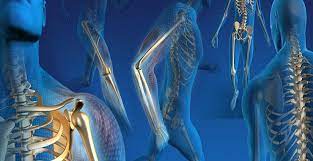Structural Health Monitoring Market is gaming significant traction as Sercel launches S-lynks, structural health monitoring system
Structural Health Monitoring,
sometimes referred to as structural assessment, is an important component of
quality improvement practices in the building environment. It is concerned with
the identification and measurement of quality systems in a building or
structure, and the identification of any trends that could affect those systems
over time. Across the globe, government organizations have started implementing
stringent regulations pertaining to the sustainability of structures. Large
engineering structures such as bridges, dams, and walkways require routine
structural assessment, in order to ensure they are safe for use. As a result of
this, the demand for SHM solutions has increased. Hence, such factors can
augment growth of the structural health monitoring market. Recently, in
November 2020, Sercel launched S-lynks, a structural health monitoring system.
Structural health monitoring has
become an imperative part of any structure across the globe. It is critical to
observe and analyze the structural integrity of any engineering structure such
as bridges and buildings periodically. Over the years, structural health
monitoring has witnessed technological advancements, enabling engineers to
carry out detailed analyses. Recently, in April 2021, SignaGuard and QuakeLogic
launched breakthrough structural health monitoring technology to analyze
buildings in earthquake-prone regions such as the Himalayas. Thus, such factors
can boost growth of the structural
health monitoring market.
There are many benefits to real-time
monitoring. One obvious benefit is the ability to quickly and efficiently
identify and respond to mechanical issues and poor performance. Often, the
cause of mechanical failure can be determined after one or more small problems
have manifested over several years of regular use. Regardless of these
advantages, there are certain factors that could potentially limit the market
growth. For instance, SHM solutions are significantly expensive and require
skilled personnel to operate them. Besides, a slow response to structural
health monitoring in emerging economies could inhibit growth of the structural
health monitoring market in the near future.
EMR sensors are typically comprised
of thermistors (temperature-resistance sensors) and ultrasonic sensors
(frequency-resistance sensors). These thermistors and ultrasonic sensors are
designed to provide structural integrity monitors by measuring the temperature
or the relative humidity of a specific area. As far as regional impact is
considered, North America is registering promising signs in the structural
health monitoring market. This growth can be attributed to rapidly aging
infrastructure including bridges, tunnels, and buildings across the region. On
the contrary, Asia Pacific is gaining significant traction due to stringent
regulations and rapid infrastructural activities in the region.




Comments
Post a Comment